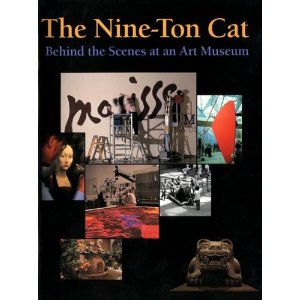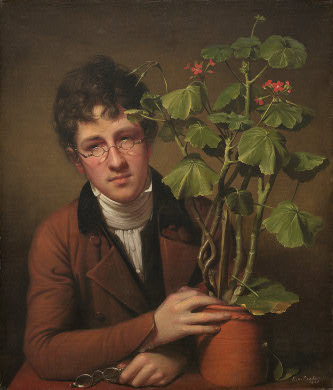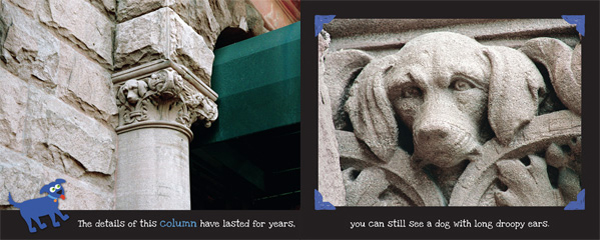 Thanks to everyone who participated in last month's giveaway for How the Sphinx Got to the Museum by Jessie Hartland (Blue Apple Books, 2010). In that post, I asked commenters for their best behind-the-scenes-at-the-museum questions (such as this one from Janelle's daughter, who asks, "Why can't I touch that?").
Thanks to everyone who participated in last month's giveaway for How the Sphinx Got to the Museum by Jessie Hartland (Blue Apple Books, 2010). In that post, I asked commenters for their best behind-the-scenes-at-the-museum questions (such as this one from Janelle's daughter, who asks, "Why can't I touch that?").
Some of those questions--about curatorial work, exhibition design, conservation and more--are answered in The Nine Ton Cat: Behind the Scenes at an Art Museum by Peggy Thomson with Barbara Moore; edited by Carol Leon (Houghton Mifflin, in association with the National Gallery of Art, Washington, DC, 1997). Now out-of-print (and maybe slightly out-of-date as well), The Nine-Ton Cat is a book for older readers (9-12 and up), who might be inspired to consider a museum-related career. It's loosely organized around a day at the National Gallery, beginning at 6am with a guard patrolling the halls and ending at 6m with a planning meeting for this very book.
In between, The Nine-Ton Cat takes you into the "private spaces" of the museum: the design studio, conservation lab, library, and greenhouse (yes, the National Gallery has its own greenhouses on site) for a close look at the work that goes on there. Detailed text, with lots of quotes from unnamed Gallery staff, and photographs contribute to the behind-the scenes appeal.
I would love to see an updated edition of The Nine-Ton Cat, perhaps in a larger, more clearly organized format (it's easy to lose your place, in much the same way that it's easy to get lost at the Gallery). In the meantime, congratulations to Christine Mingus, winner of How the Sphinx Got to the Museum! I think her elementary school students will love it.
 [One of my favorite anecdotes from The Nine-Ton Cat: The head of the horticultural staff wishes that Rubens Peale (in a portrait painted by his brother Rembrandt, 1801) would water his geranium! It does look a little wilted, doesn't it?]
[One of my favorite anecdotes from The Nine-Ton Cat: The head of the horticultural staff wishes that Rubens Peale (in a portrait painted by his brother Rembrandt, 1801) would water his geranium! It does look a little wilted, doesn't it?]




